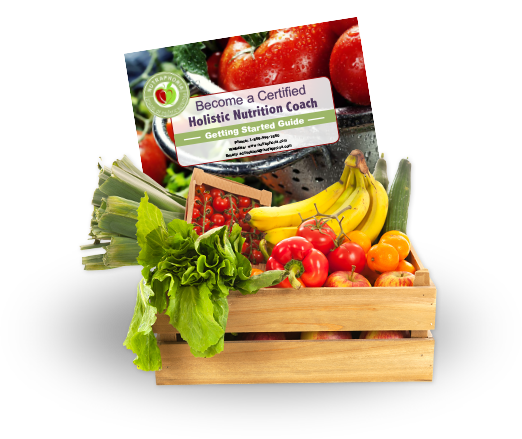March 26, 2017
It doesn’t have to be!
Did you know there are many ways of eating clean on a budget?
Clean eating can be defined as eating whole foods as close as possible to their natural state with minimal to no processing.
Some examples of clean choices are:
- unpasteurized local honey instead of white sugar (even agave syrup, which some people advocate as a healthy alternative to sugar, is quite processed)
- fresh fruits and vegetables instead of dried, frozen or canned
- whole brown rice, steel-cut oats, quinoa and millet instead of breads, pastas, and granola bars
- fresh, local meats instead of processed meats like hot dogs, chicken strips, and fish fingers
- plain yogurt instead of flavoured/sweetened versions
Typically a food is considered clean if it only has one ingredient on the label, or has no need for a label at all. On the extreme end of clean foods, you would find organic fruits and vegetables, pastured eggs, poultry and pork, and grass-fed and finished beef and dairy. And many of these options can be hard to find or quite expensive.
However, there are plenty of options for eating clean on a budget. Here are just a few:
Purchase whole foods and cook your meals from scratch. Buying all the ingredients you need to make a meal is typically much less expensive than buying ready made, or ready-to-microwave meals. Purchase ingredients that are versatile and can be used in many different recipes/dishes. For instance, cabbage is inexpensive, keeps a long time, and is extremely versatile. It can be used for wraps, in salads, for making cabbage rolls, in stir-frys, and in soups. Cooking from scratch may take a little more time, but the results are usually much tastier, certainly more healthy, and preparing meals as family is a great way to spend some quality time together, and teach your children how to eat healthier.
Plan your meals and shop accordingly. Having a plan for the week or the month will make it easier to cook your meals from scratch and utilize your leftovers, and will reduce waste. Planning out your meals and buying in bulk may also justify a trip to a store that offers better prices and/or variety. And planning ahead means that you don’t have to ask that dreaded question when you get home from work, “what am I going to make for dinner?”
When purchasing your fruits and vegetables there are a number of things to consider:
Consider the dirty dozen and the clean 15. Here is the list from 2016. Stick to organic for the dirty dozen, or skip these foods altogether. But when buying your avocado, it may not make sense to you to pay a premium for organic.
Frozen fruits and vegetables are less likely to spoil. If you tend to throw away produce that has gone bad before you have had a chance to eat it, then consider buying some frozen. Most often frozen fruits and vegetables are frozen within hours of picking and retain many of their nutrients, and they keep much longer. Definitely choose frozen over canned, as canned fruits and vegetables are more processed and usually contain other additives.
Shop for your fruits and vegetables by season. We have become so used to seeing a wide variety of produce all through the year, but if you watch prices carefully then you will notice that squashes are least expensive in the fall, and berries are least expensive in the summer. And the flavour is so much better when things are in season. Have you ever eaten a fresh but flavourless strawberry in Canada in the January?
Consider buying fresh, local, seasonal produce in bulk and then preserving it. When you buy locally grown fruit and vegetables you get a much fresher product that will last longer with less spoilage. I purchased a case of field tomatoes from a local farmers’ market in the fall, washed and froze them the next day. And then I used them all winter in the place of canned tomatoes in soups, stews and sauces. The entire process was easy and it was much less expensive than buying canned tomatoes, or fresh tomatoes in the winter. And remember the flavourless winter strawberry? Buy them by the case in early summer and freeze them. Through the winter you can enjoy them in smoothies, baking, or in oatmeal. Frozen strawberries do not dip well in chocolate, so that will have to be a summer-time treat.
A variety of fruits and vegetables is important, but consider the nutrient density of a food in relation to the cost. Cucumbers and iceberg lettuce contain a great deal of water and very few nutrients compared to kale and carrots. Choose nutrient dense foods that will give you the most nutrient bang for your buck.
Grow your own! Ok, this may sounds impossible to many people. You may think you do not have the skill, or the space, but trust me, you do not need a green thumb or big back yard to grow your own food. You can grow tomatoes in a container on a porch or apartment balcony. Lettuces will grow in window boxes. Herbs can be grown in small pots just like house plants, all year long. But the easiest way to grow your own fresh, clean food is sprouting. All it takes is some seeds, a jar, and some water. Soak your seeds overnight to begin with, drain in the morning, then rinse and drain each morning and evening for 3-5 days depending on your sprouts. In 5 days I can grow the equivalent of a $4 container of sprouts for about 40 cents and it takes less than a minute a day in effort.
Another thing to keep in mind too, is that when you eat whole foods you are eating foods that are packed with nutrients. What this means is that you will actually want to eat less.
Whole foods = more nutrients + fewer calories. Processed foods = fewer nutrients + more calories.
Eating clean can definitely be more expensive but it can also be done within most grocery budgets. Think outside of the box, literally.
Move away from processed boxed foods and try to eat more living, whole foods. Your body will thank you for it.


